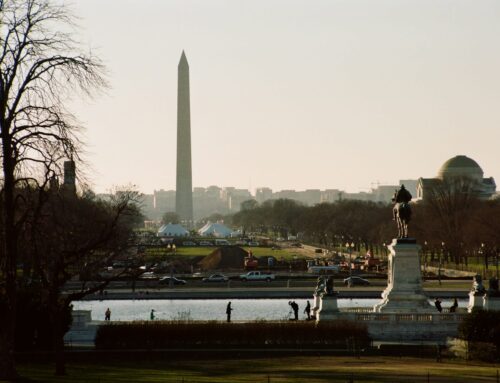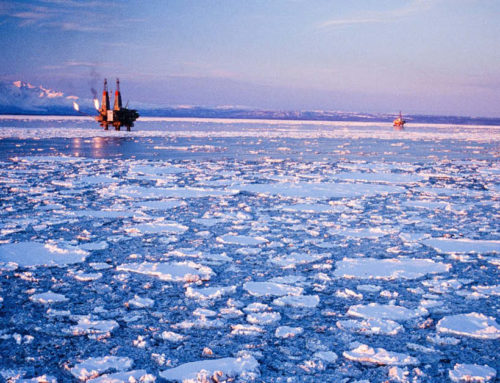June 30, 2003
Honorable President George W. Bush
President of the United States
The White House
Washington, DC 20500
Dear Mr. President:
As North American scientists with experience in biological research, conservation, and management of forest resources, including knowledge about the Tongass Land Management Plan, we are writing in support of keeping Alaska’s national forests in the U.S. Forest Service’s national roadless area policy. We recognize there are strong pressures to remove Alaska’s national forests from this policy. In our professional judgment, both the Tongass and Chugach national forests should remain an integral part of this important national policy, which has received strong public and scientific support from across the nation. This policy is based on a solid foundation of science and will do much to safeguard the ecological integrity of Alaska’s coastal forest ecosystem.
Alaska’s national forests occur within the Pacific Coast’s temperate rainforest ecosystem. Throughout the world, old-growth temperate rainforests are rapidly disappearing. Today, the Tongass National Forest represents the largest remaining tracts of old-growth temperate rainforest in the world. Established in 1907 by President Theodore Roosevelt, the Tongass is the country’s largest national forest (16.8 million acres). Unlike most national forests, both the Tongass and Chugach (the nation’s second largest national forest) still encompass many undisturbed watersheds with a full complement of all native species including productive populations of bald eagles, wolves, brown bears, and five species of anadromous salmon. And we still have much to learn about the unique biodiversity and archeological resources of these forests.
In Alaska, bald eagles, goshawks, marbled murrelets, Sitka black-tailed deer, river otters, marten, wolves, brown bears, salmon, and a variety of forest birds are among the species that depend on large, undisturbed tracts of old-growth forest for maintaining productive, well-distributed populations. The ecological characteristics of old-growth forests require centuries to develop. Clearcutting old growth (at 100-200 yr. rotations) will permanently reduce its habitat value for old-growth affiliated species. Building new roads will further fragment this important ecosystem and increase risks, particularly to large carnivores and aquatic systems. For example, during the Tongass Land Management Plan revision, the Forest Service convened several expert panels to evaluate the conservation effectiveness of the plan and its alternatives. The brown bear panel recommended that the Forest Service should retain unroaded watersheds in a roadless condition to maintain refugia for bears. The expert panel on wolves raised significant concerns about road management and increased mortality of wolves. The fish experts also expressed concerns about road construction and its effects on spawning and rearing habitat for anadromous salmon. It has been consistently demonstrated that roadless areas are crucial to the protection of our nation’s wildlife, fisheries and water resources.
In the Tongass, there are 2.5 million acres of roadless areas left open to development, including more than 450,000 acres of roadless old growth. These roadless old-growth reserves are especially critical because only four percent of the entire Tongass land-base encompasses the low elevation, large old-growth trees most important for fish and wildlife habitat and much of this rare forest has already been clearcut. In addition, steep rugged terrain makes roads in this region vulnerable to erosion and landslides and very expensive to construct. The ecological risks associated with developing these areas are extremely high, and may jeopardize fishing, hunting, tourism, recreation and subsistence in southeast Alaska. Protecting roadless areas on the Tongass National Forest, however, would not eliminate commercial forestry. There are already over 5,000 miles of permanent roads within the Tongass, and over five billion board feet of timber is potentially available from the existing road network to support a small-scale industry.
There is no scientific basis to exclude the Tongass or Chugach national forests from the Forest Service’s national roadless policy. In 1999, over 330 North American scientists (including 100 Alaskan scientists) joined us in requesting that the Tongass National Forest be included in the Roadless Rule. Excluding the Tongass or Chugach would significantly compromise the scientific legitimacy of any national policy on the protection of roadless areas in our national forest system. We are not opposed to the reasonable use of sustainable resources, including timber harvest. However, we clearly recognize the ecological importance of roadless areas in protecting the diverse and unique natural resources within our national forest system.
As you consider the national roadless area policy, we encourage you Mr. President to ensure that the remaining roadless areas within America’s two largest national forests (the Tongass and Chugach) receive the same level of protection and precautionary management as those in national forests throughout the rest of the United States. Thank you for considering our scientific perspective and concerns about roadless areas in Alaska’s national forests.
Sincerely,
Paul Alaback, Ph.D. +
Assistant Professor
School of Forestry
University of Montana
Missoula, MT 59812
Craig W. Benkman, Ph.D. *
Assoc. Professor of Biology,
New Mexico State University
Las Cruces, NM 88003
Andrew Hansen, Ph.D. + *
Associate Professor
Department of Ecology
Montana State University
Bozeman, MT 59717
Robert L. Jarvis, Ph.D. *
Professor
Department of Fisheries & Wildlife
Oregon State University
Corvallis, OR 97331
David R. Klein, Ph.D. +
Professor Emeritus,
Institute of Arctic Biology
University of Alaska – Fairbanks
Fairbanks, AK 99775
K V. Koski, Ph.D. +
Essential Fish Habitat Coordinator
National Marine Fisheries Service
Alaska Fisheries Science Center
Auke Bay Laboratory
Auke Bay, AK 99801
Russell Lande, Ph.D. *
Professor of Biology and MacArthur
Fellow
University of California, San Diego
La Jolla, CA 92093
William Lidicker, Jr., Ph.D. *
Professor of Integrative Biology,
Emeritus
University of California, Berkeley
Berkeley, CA 94720
Dale R. McCullough, Ph.D. *
Professor of Wildlife Biology
University of California, Berkeley
Berkeley, CA 94720
Bruce McLellan, Ph.D. *
Co-Chair IUCN Bear Specialist Group
Revelstoke, B.C.
Canada
Sterling Miller, Ph.D. **
Senior Wildlife Biologist
National Wildlife Federation
Missoula, MT 59802
Paul C. Paquet, Ph.D. *
Faculty of Environmental Design
University of Calgary
Calgary, AB
Roger Powell, Ph.D. *
Professor of Zoology
North Carolina State University
Raleigh, NC 27695
John Ratti, Ph.D. + *
Research Professor
Department of Fish and Wildlife
Resources
University of Idaho
Moscow, ID 83843
John W. Schoen, Ph.D. + **
Sr. Scientist, National Audubon Society
Affiliate Associate Professor
Department of Biology and Wildlife
University of Alaska Fairbanks
Anchorage, AK 99501
Charles C. Schwartz, Ph.D. + **
Affiliate Assistant Professor
Department of Ecology
Montana State University
Bozeman, MT 59717
Mark Shaffer, Ph.D. *
Senior Vice President
Defenders of Wildlife
Washington, DC 20005
Christopher C. Smith, Ph.D. *
Professor, Division of Biology
Kansas State University
Manhattan, KS 66506
Richard D. Taber, Ph.D. *
Professor Emeritus
Forest Zoology and Wildlife Science
University of Montana
Missoula, MT 59812
Victor Van Ballenberghe, Ph.D. + ***
Affiliate Professor
Department of Biology and Wildlife
University of Alaska Fairbanks
Anchorage, AK 99501
Mary F. Willson, Ph.D. +
Affiliate Professor
School of Fisheries and Ocean Science
Department of Biology and Wildlife
University of Alaska Fairbanks
Juneau, AK 99801
Cc:
U.S. Senator John McCain
U.S. Senator Ernest Hollings
U.S. Representative Sherwood Boehlert
U.S. Representative Ralph Hall
USFS Chief Dale Bosworth
U.S. Secretary of Agriculture Ann Veneman
Under Secretary of Agriculture Mark Rey
+ Significant research experience in Alaska’s Tongass or Chugach national forests
* Served on the Tongass Plan’s peer review committee of scientists reviewing wildlife
management and conservation biology on the Tongass National Forest
** Served on Expert Brown Bear Panel for Tongass Land Management Plan
*** Co-author of Wolf Conservation Assessment for the Tongass National Forest










